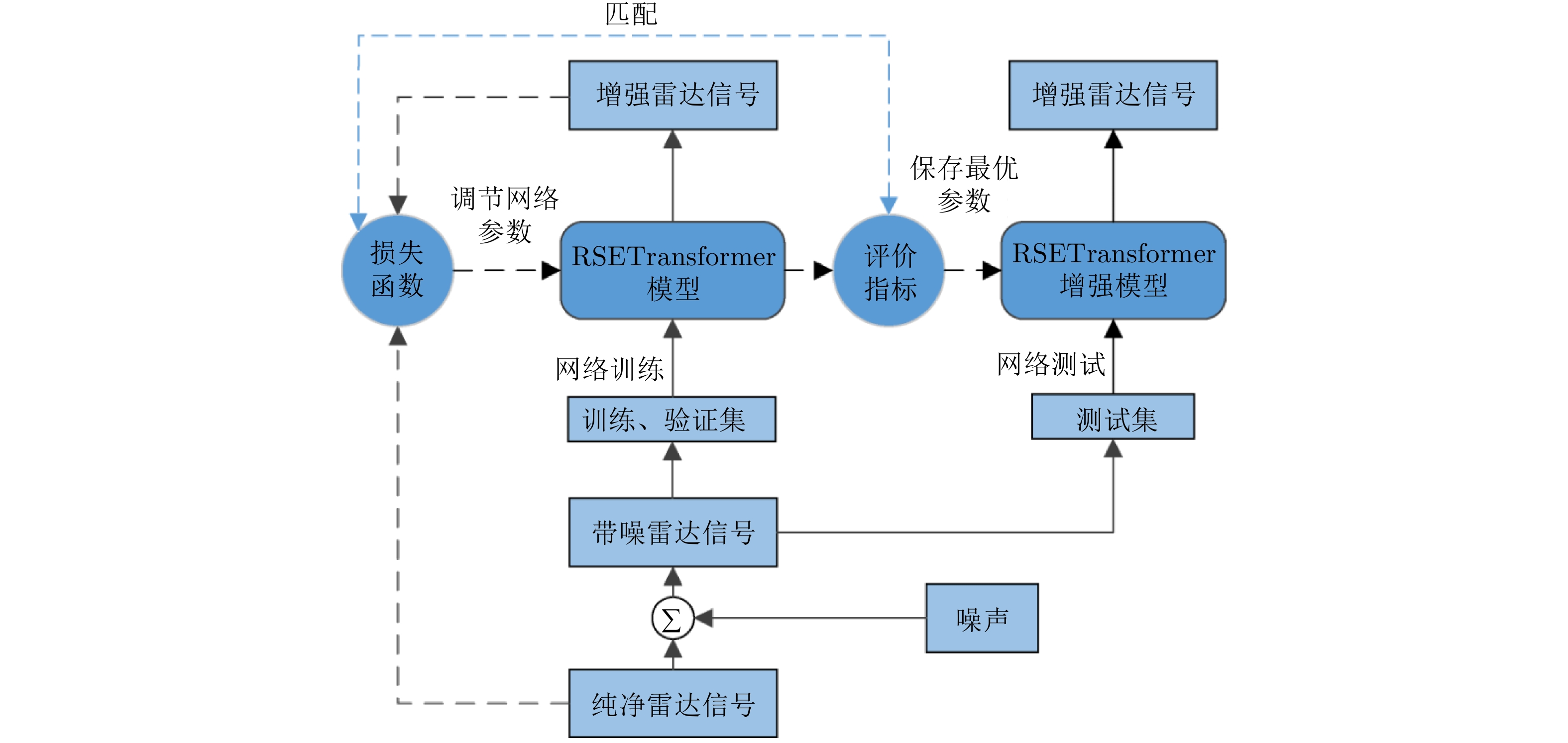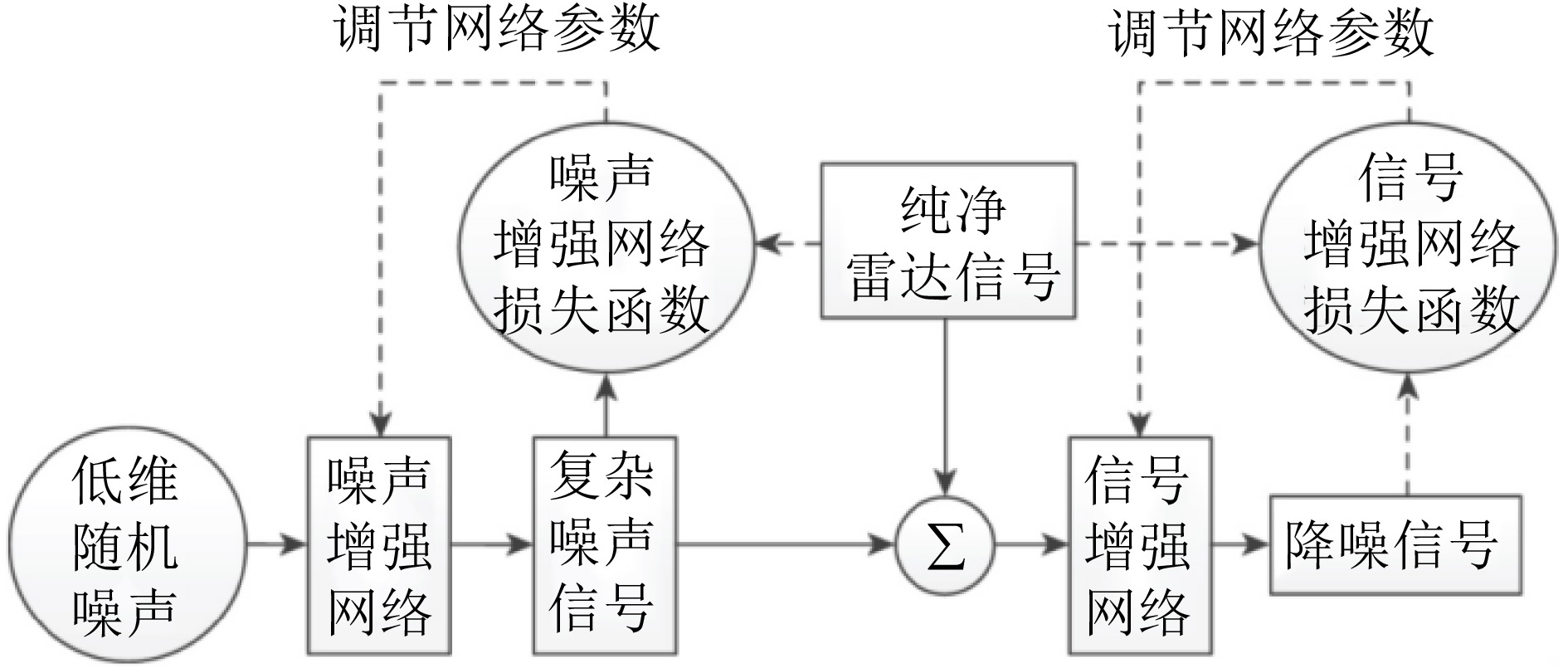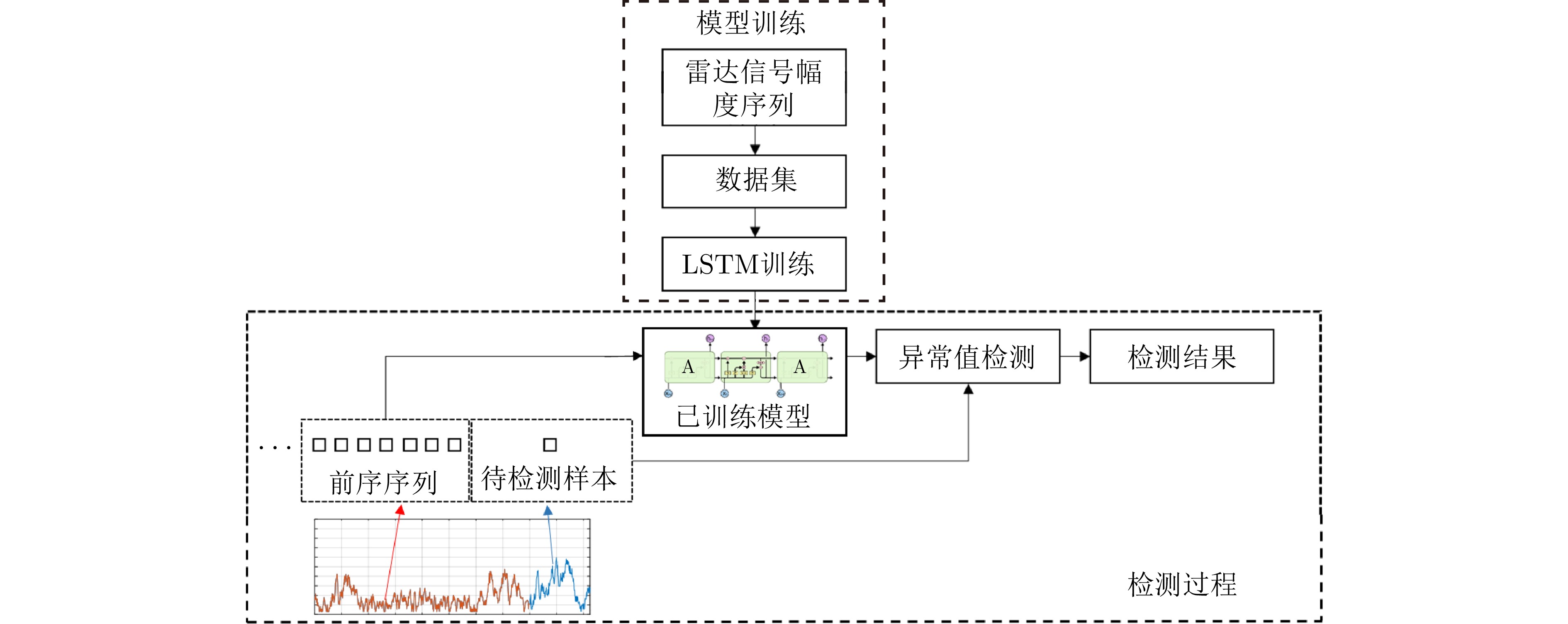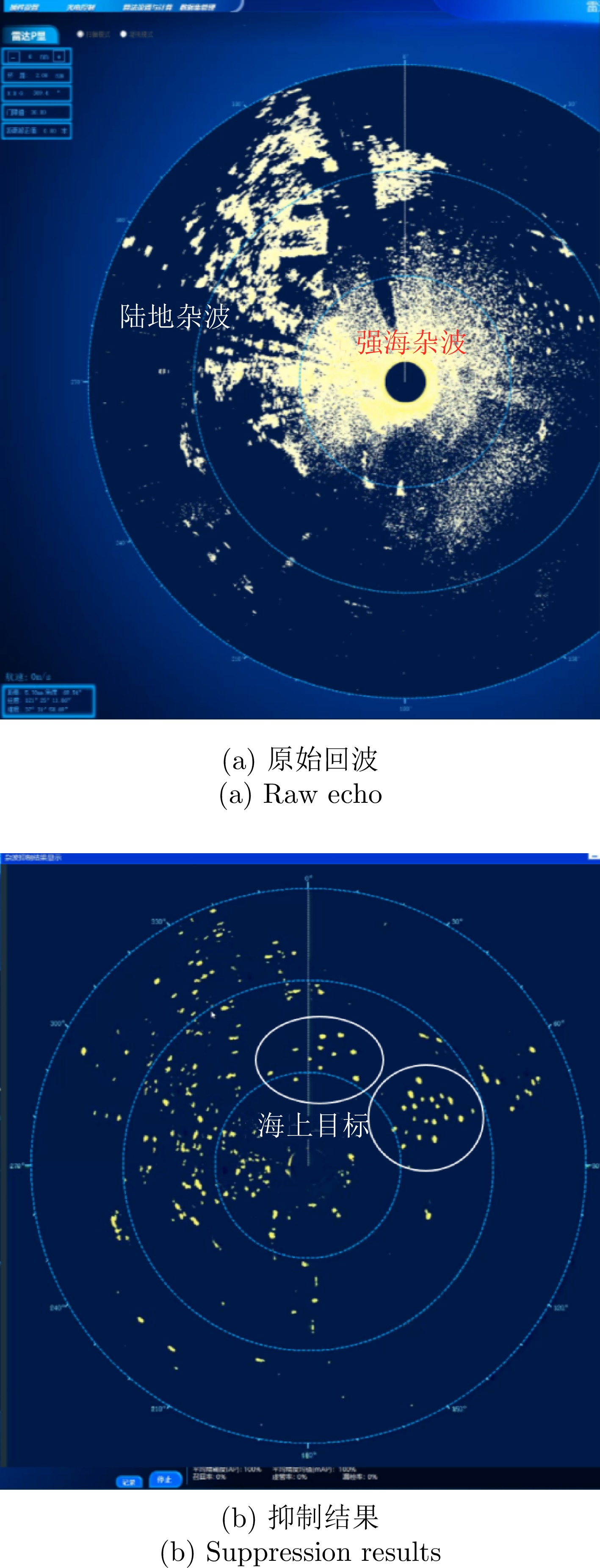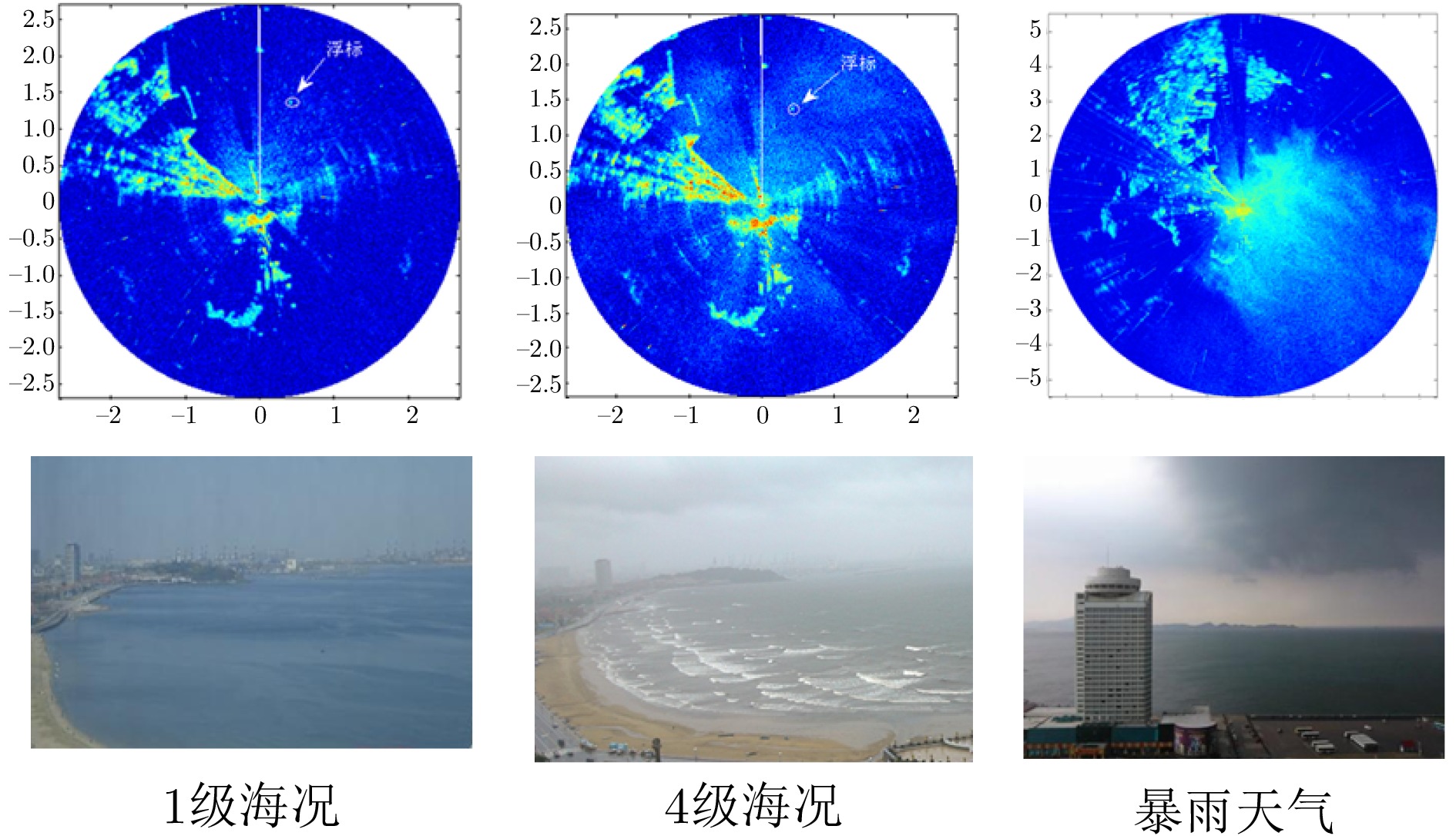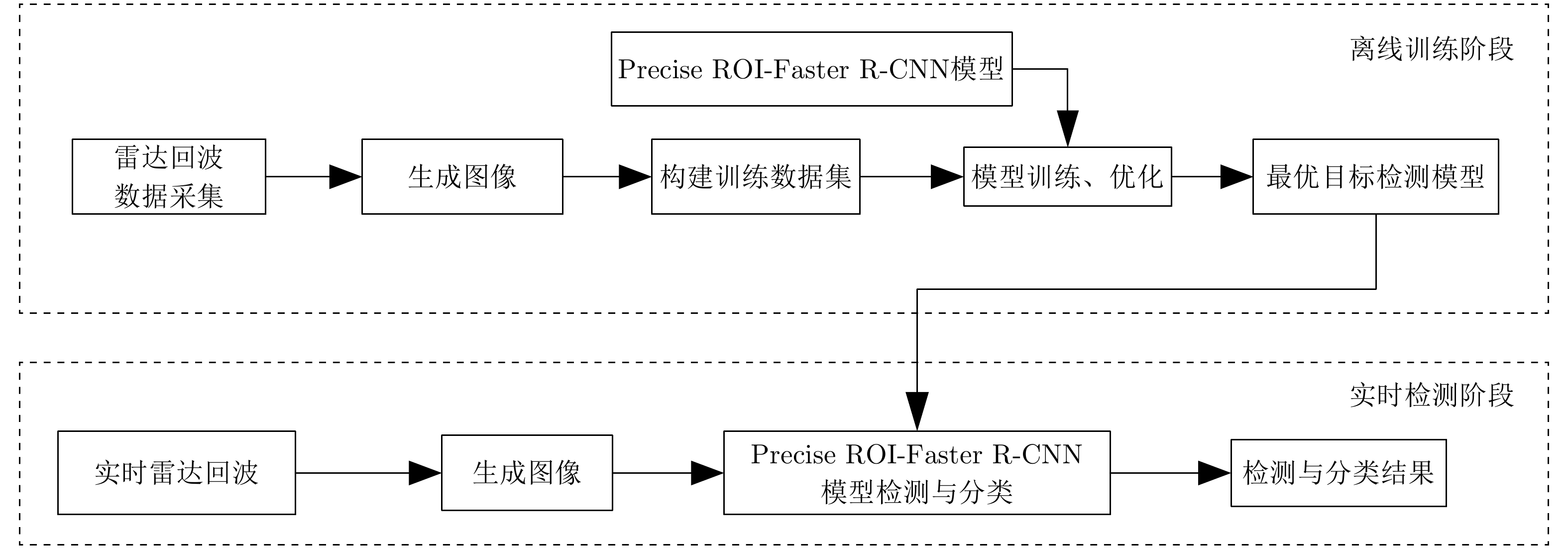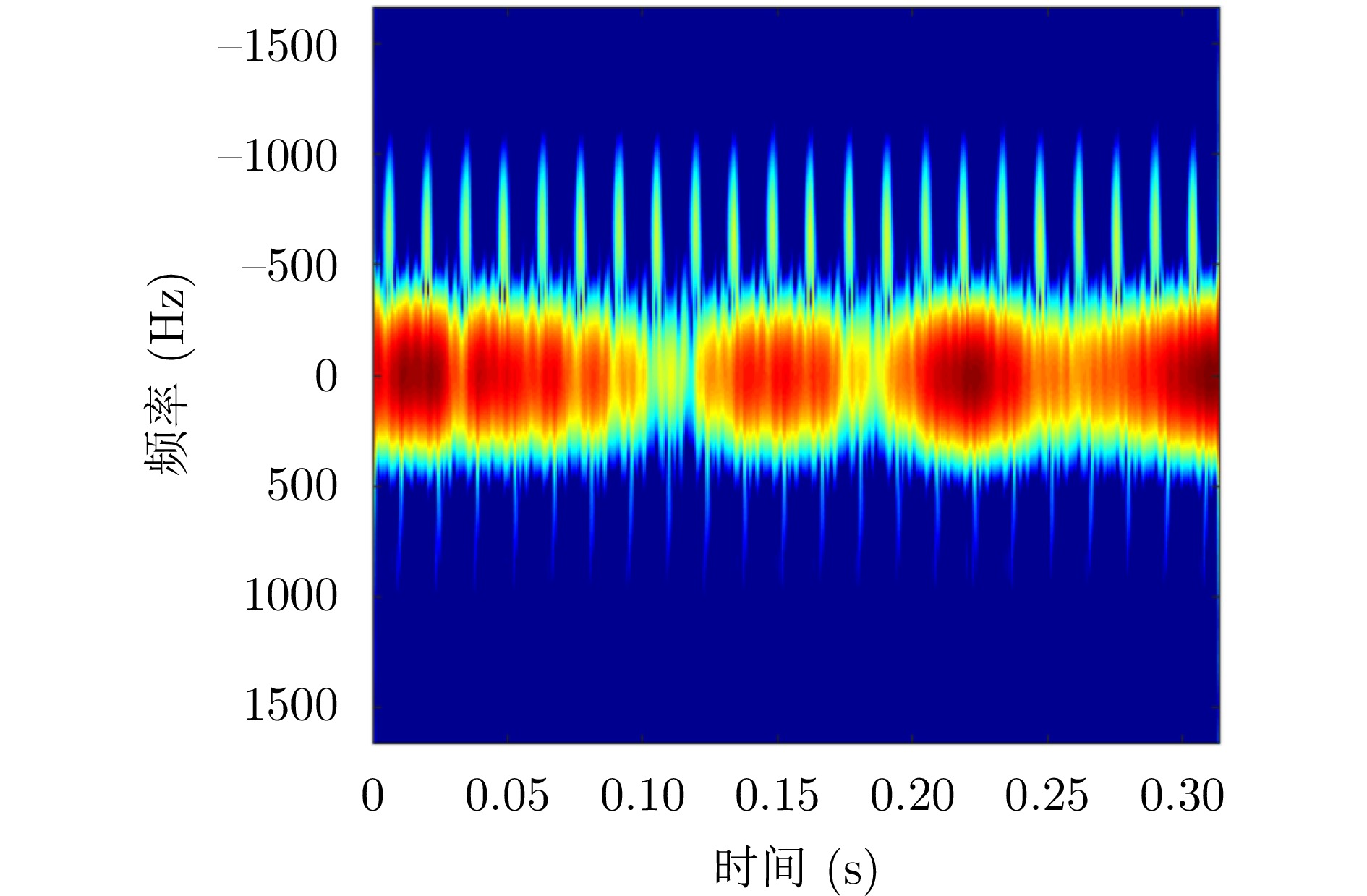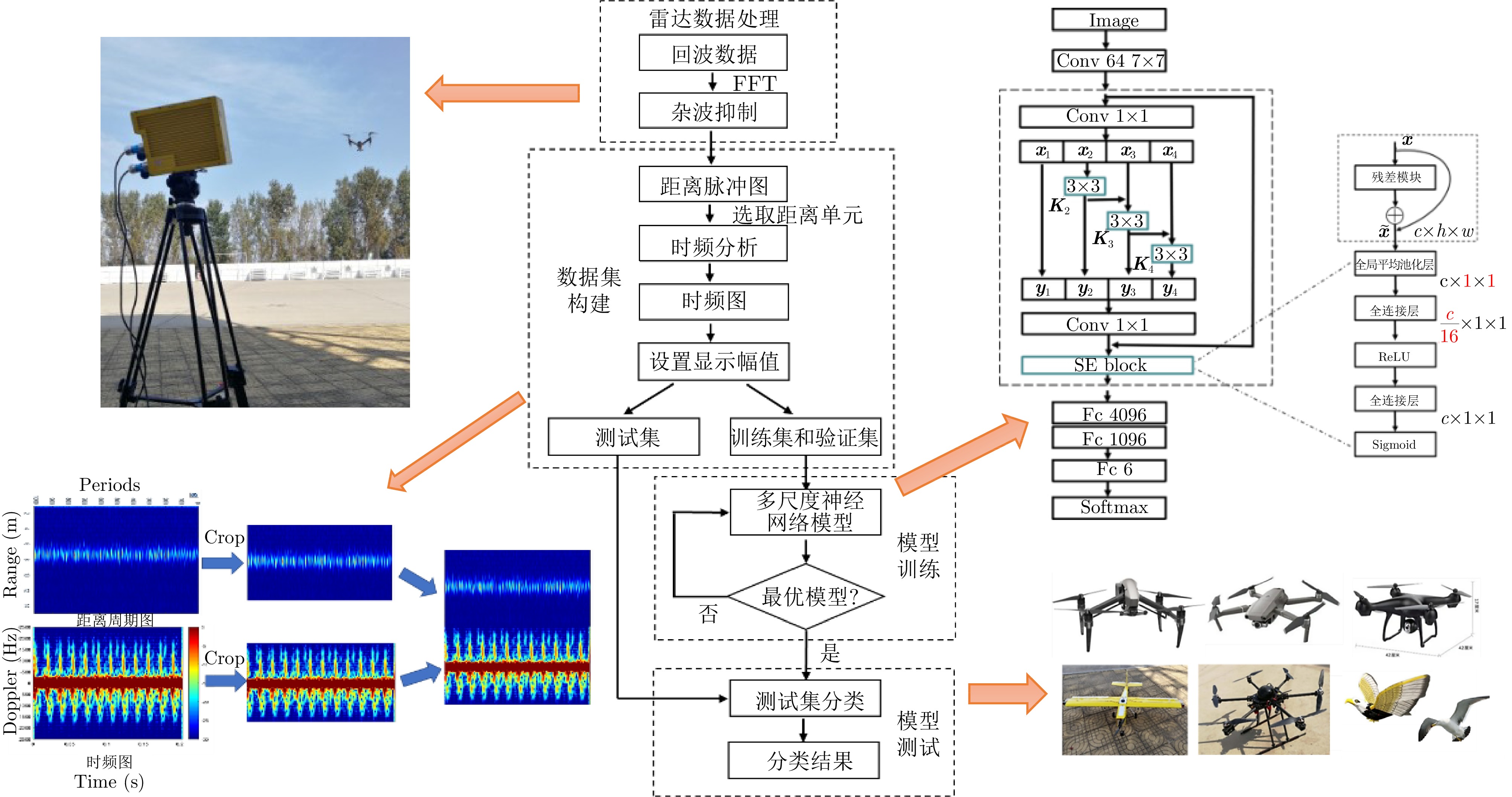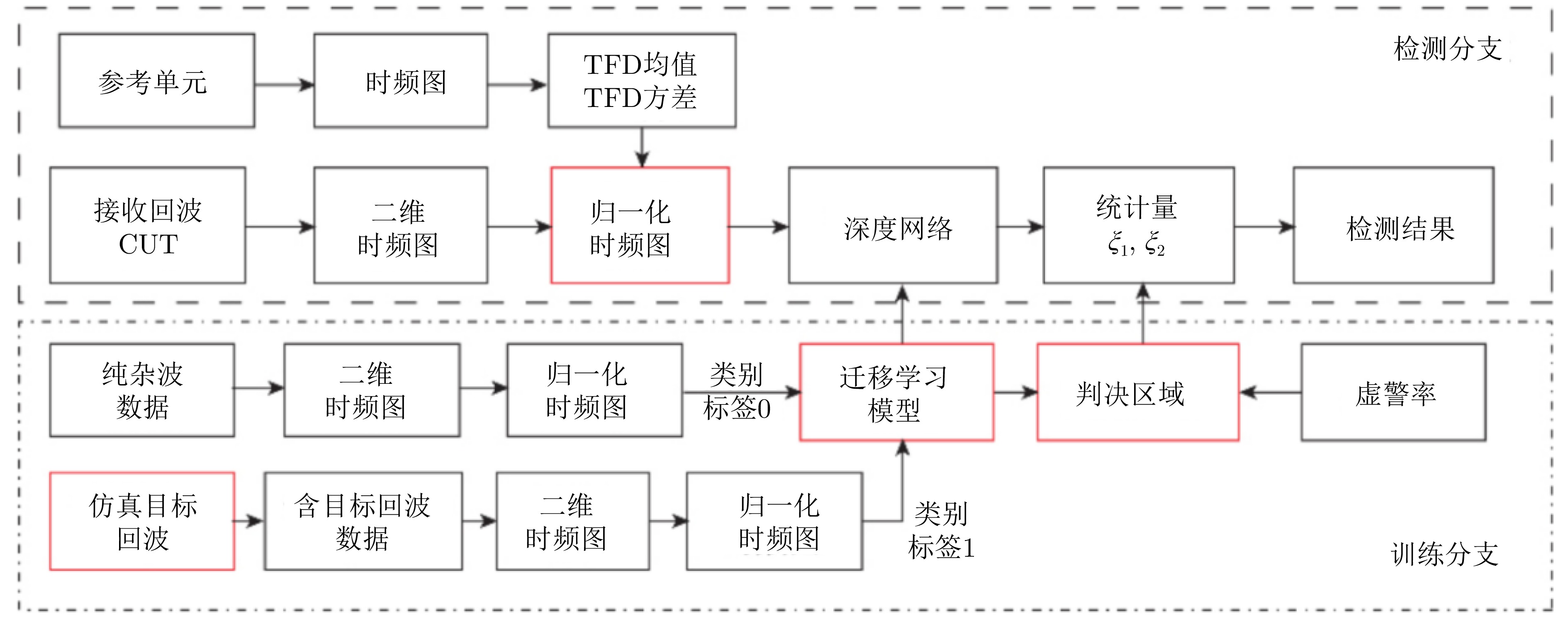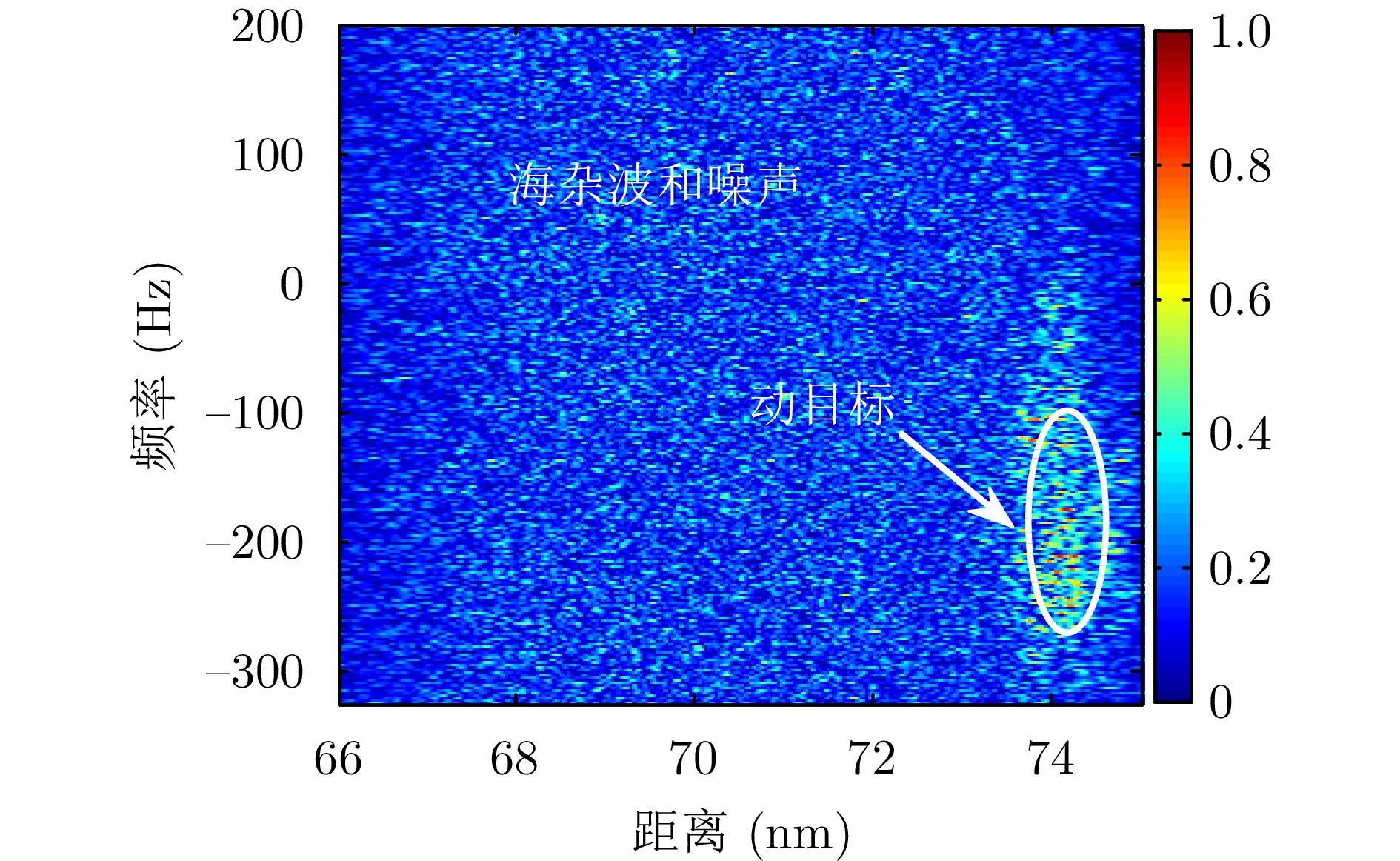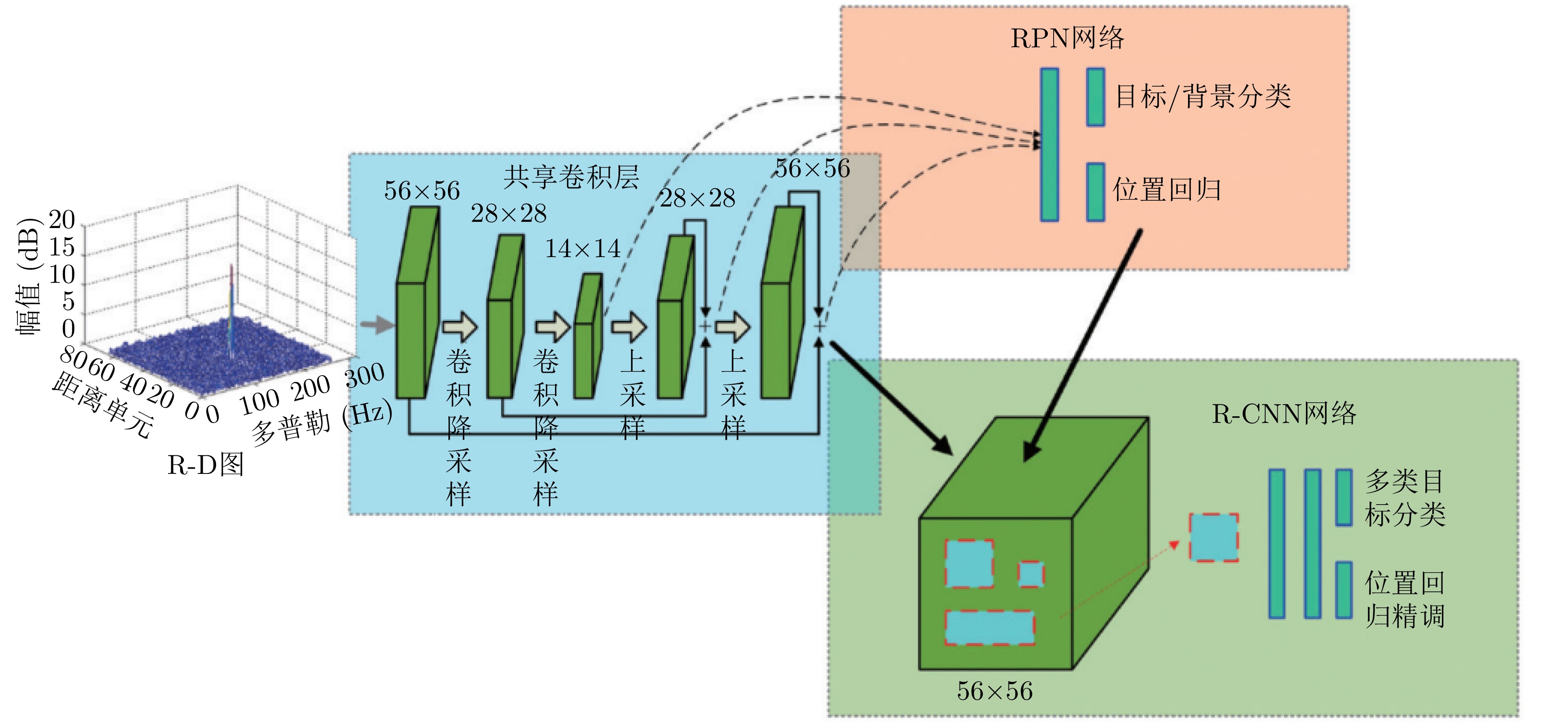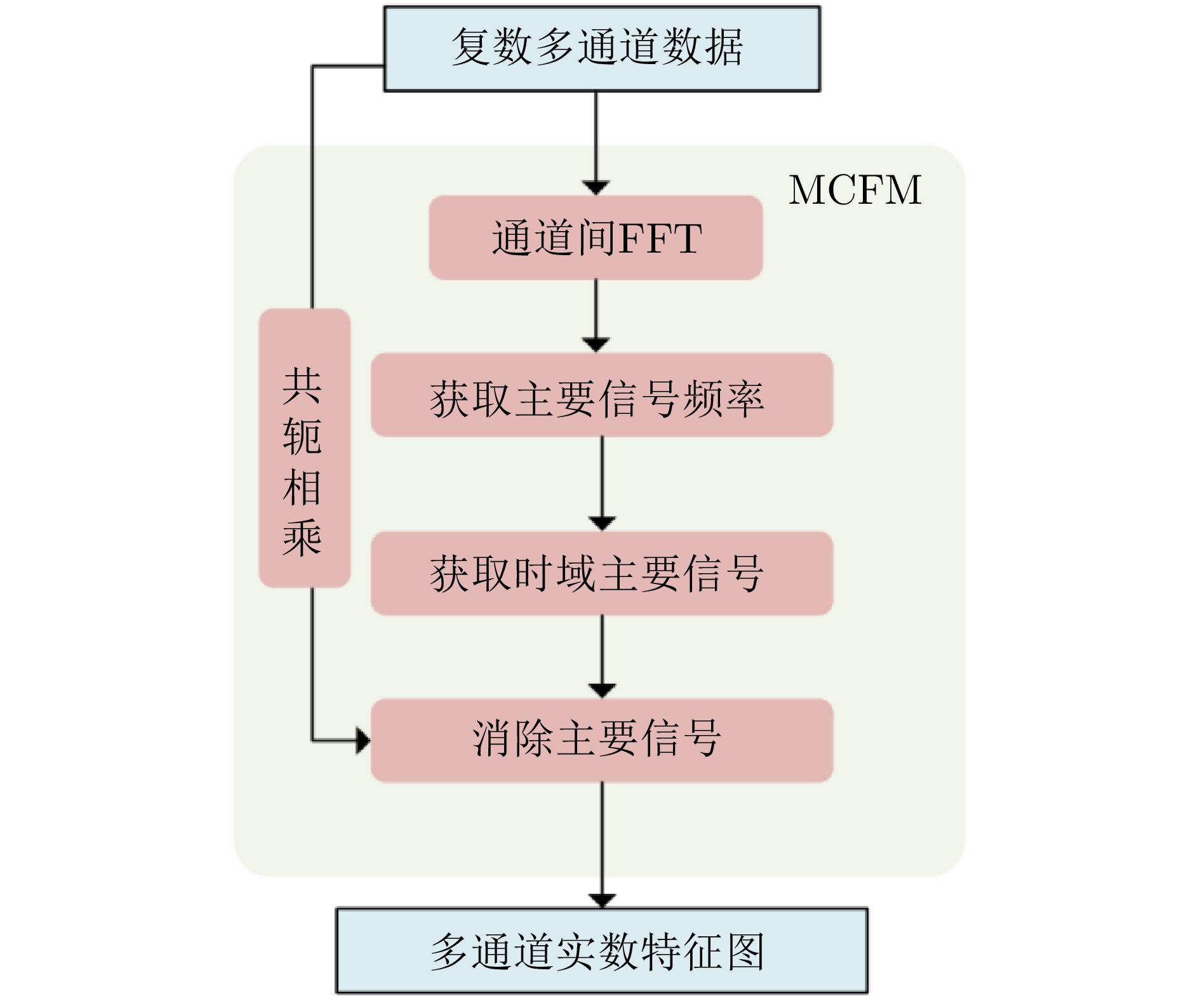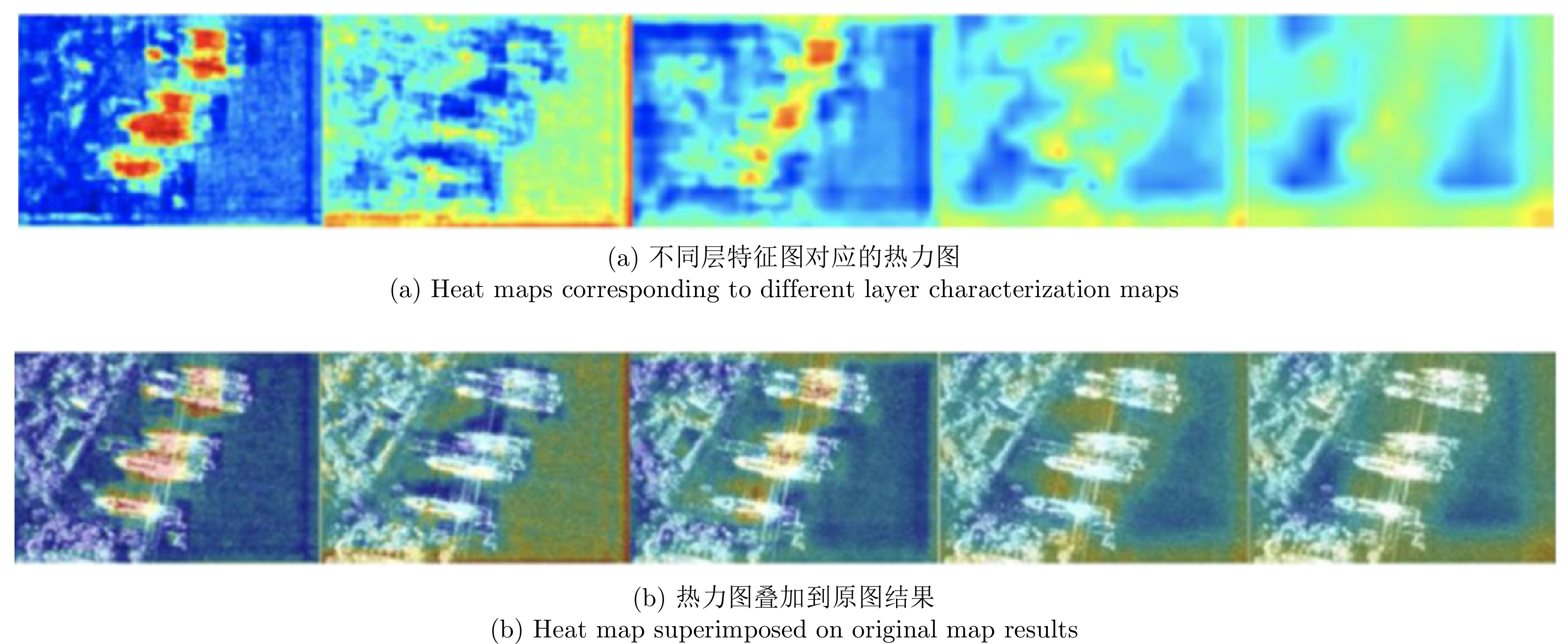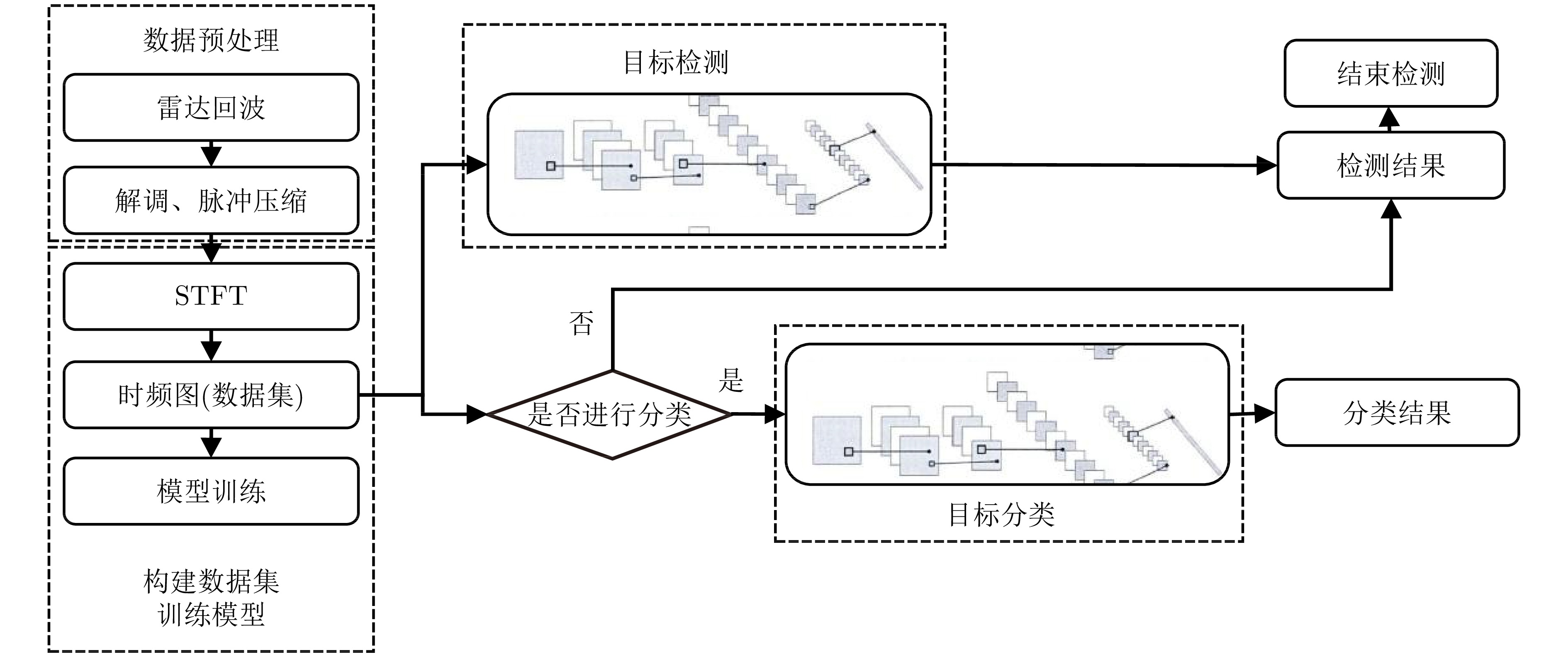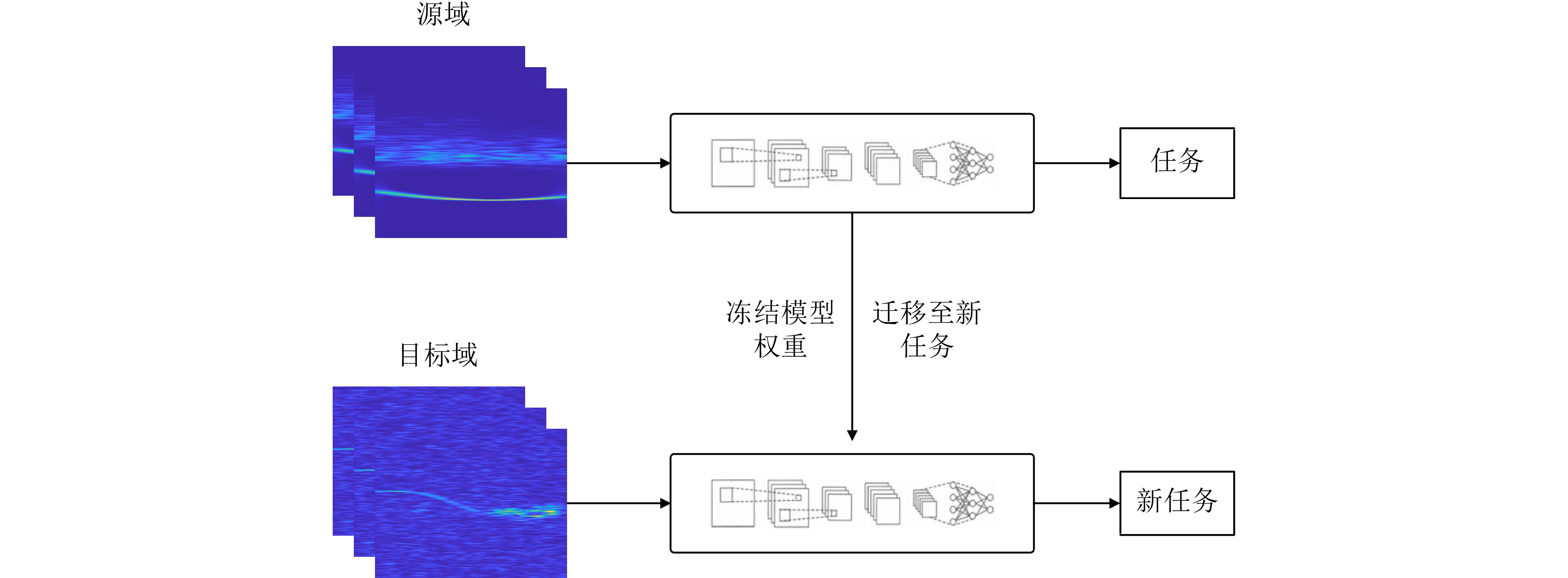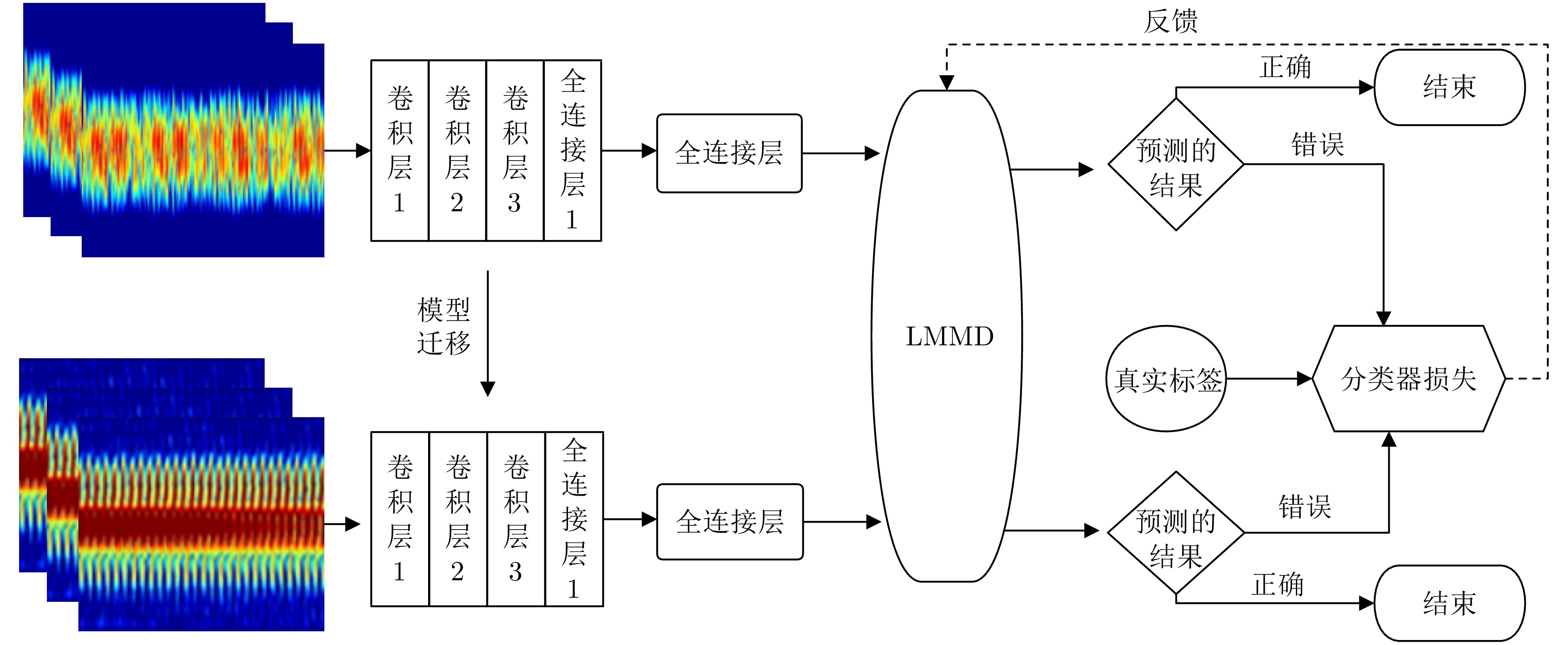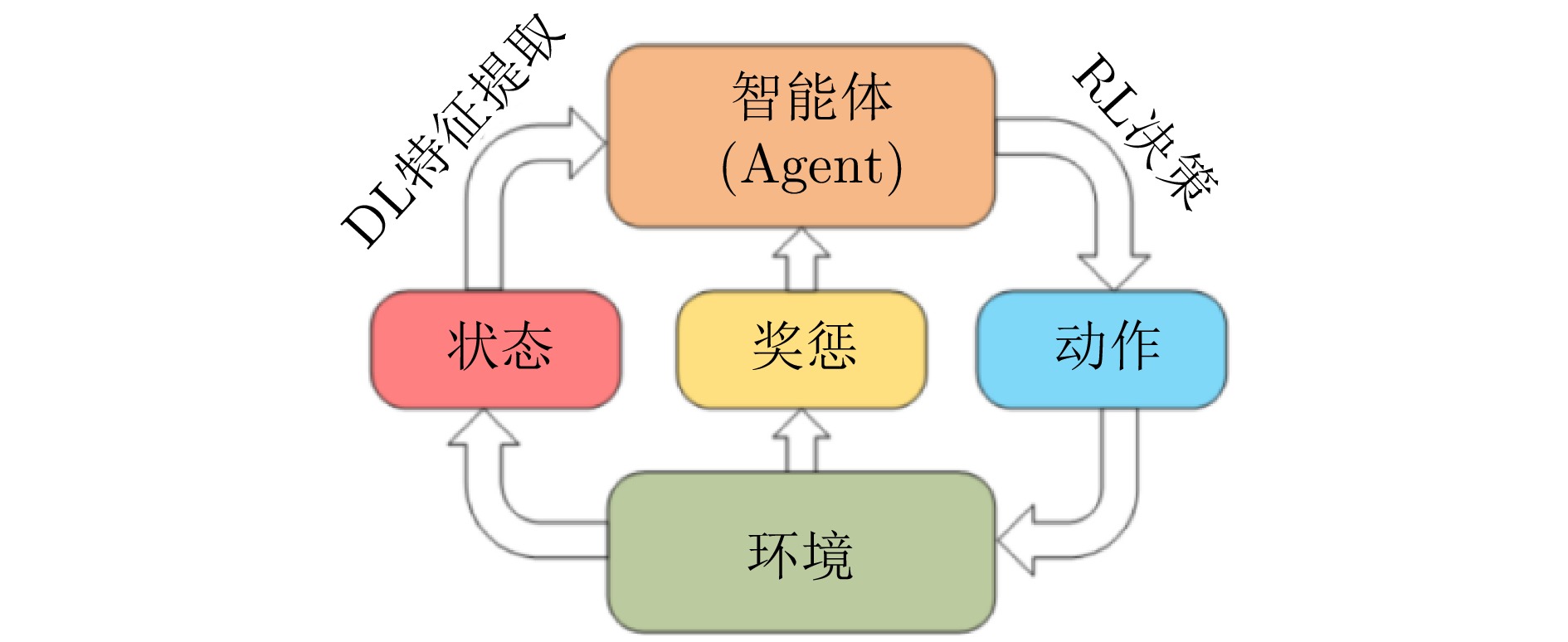| [1] |
金亚秋. 多模式遥感智能信息与目标识别: 微波视觉的物理智能[J]. 雷达学报, 2019, 8(6): 710–716. doi: 10.12000/JR19083. JIN Yaqiu. Multimode remote sensing intelligent information and target recognition: Physical intelligence of microwave vision[J]. Journal of Radars, 2019, 8(6): 710–716. doi: 10.12000/JR19083. |
| [2] |
王俊, 郑彤, 雷鹏, 等. 深度学习在雷达中的研究综述[J]. 雷达学报, 2018, 7(4): 395–411. doi: 10.12000/JR18040. WANG Jun, ZHENG Tong, LEI Peng, et al. Study on deep learning in radar[J]. Journal of Radars, 2018, 7(4): 395–411. doi: 10.12000/JR18040. |
| [3] |
YANG Jianyu. Development laws and macro trends analysis of radar technology[J]. Journal of Radars, 2012, 1(1): 19–27. doi: 10.3724/SP.J.1300.2013.20010. |
| [4] |
WANG Ting, ZHAO Chen, CHEN Zezong, et al. Research on denoising method of high frequency ground wave radar ocean echo spectrum based on DnCNN network[C]. The 18th National Conference on Radio Wave Propagation, Qingdao, China, 2023: 4–8. doi: 10.26914/c.cnkihy.2023.050865. |
| [5] |
YE Xin, QIAN Jiang, WANG Lu, et al. Noise suppression of ISAR micro cluster targets based on Generated Adversarial Network[C]. 2021 CIE International Conference on Radar (Radar), Haikou, China, 2021: 704–707. doi: 10.1109/Radar53847.2021.10028484. |
| [6] |
HU Minghuan, MAO Jiandong, LI Juan, et al. A novel lidar signal denoising method based on convolutional autoencoding deep learning neural network[J]. Atmosphere, 2021, 12(11): 1403. doi: 10.3390/atmos12111403. |
| [7] |
SHI Duanyang, LIN Qiang, HU Bing, et al. Radar clutter suppression method based on neural network optimized by genetic algorithm[J]. Modern Defence Technology, 2021, 49(6): 74–83. doi: 10.3969/j.issn.1009-086x.2021.06.011. |
| [8] |
SHI Duanyang, LIN Qiang, HU Bing, et al. Radar clutter suppression method based on LVQ neural network[J]. Fire Control Command & Control, 2023, 48(4): 37–44. doi: 10.3969/j.issn.1002-0640.2023.04.006. |
| [9] |
TANG Xianhui, LI Dong, CHENG Wanru, et al. A novel sea clutter suppression method based on deep learning with exploiting time-frequency features[C]. The IEEE 5th Advanced Information Technology, Electronic and Automation Control Conference (IAEAC), Chongqing, China, 2021: 2548–2552. doi: 10.1109/IAEAC50856.2021.9390660. |
| [10] |
WANG Yumiao, ZHAO Wenjing, WANG Xiang, et al. Nonhomogeneous sea clutter suppression using complex-valued U-Net model[J]. IEEE Geoscience and Remote Sensing Letters, 2022, 19: 4027705. doi: 10.1109/LGRS.2022.3214633. |
| [11] |
MOU Xiaoqian, CHEN Xiaolong, GUAN Jian, et al. Sea clutter suppression for Radar PPI images based on SCS-GAN[J]. IEEE Geoscience and Remote Sensing Letters, 2021, 18(11): 1886–1890. doi: 10.1109/LGRS.2020.3012523. |
| [12] |
SU Ningyuan, CHEN Xiaolong, GUAN Jian, et al. Maritime target detection based on radar graph data and graph convolutional network[J]. IEEE Geoscience and Remote Sensing Letters, 2022, 19: 4019705. doi: 10.1109/LGRS.2021.3133473. |
| [13] |
GENG Changqing, YANG Chengzhi, WU Hongchao, et al. Research on weak radar signal enhancement technology based on convolutional neural network[J]. Tactical Missile Technology, 2018(6): 101–105. doi: 10.16358/j.issn.1009-1300.2018.8.108. |
| [14] |
SU Congzhi, WU Hongchao, YANG Chengzhi, et al. LPI radar signal enhancement based on RSETransformer[J]. Tactical Missile Technology, 2022(5): 44–54. doi: 10.16358/j.issn.1009-1300.20220096. |
| [15] |
CAO Pengyu, YANG Chengzhi, SHI Limeng, et al. LPI radar signal enhancement based on DAE-GAN network[J]. Systems Engineering and Electronics, 2021, 43(9): 2493–2500. doi: 10.12305/j.issn.1001-506X.2021.09.16. |
| [16] |
KONG Yameng, FENG Dejun, and ZHANG Jiang. Radar HRRP target recognition based on composite deep networks[C]. 2022 International Applied Computational Electromagnetics Society Symposium (ACES-China), Xuzhou, China, 2022: 1–5. doi: 10.1109/ACES-China56081.2022.10064953. |
| [17] |
TANG Tao, WANG Cai, and GAO Meiguo. Radar target recognition based on micro-doppler signatures using recurrent neural network[C]. The IEEE 4th International Conference on Electronics Technology (ICET), Chengdu, China, 2021: 189–194. doi: 10.1109/ICET51757.2021.9450934. |
| [18] |
SU Ningyuan, CHEN Xiaolong, GUAN Jian, et al. One-dimensional sequence signal detection method for marine target based on deep learning[J]. Journal of Signal Processing, 2020, 36(12): 1987–1997. doi: 10.16798/j.issn.1003-0530.2020.12.004. |
| [19] |
SU Ningyuan, CHEN Xiaolong, CHEN Baoxin, et al. Dual-channel convolutional neural networks feature fusion method for radar maritime target intelligent detection[J]. Modern Radar, 2019, 41(10): 47–52, 57. doi: 10.16592/j.cnki.1004-7859.2019.10.009. |
| [20] |
CHEN Xiaolong, SU Ningyuan, HUANG Yong, et al. False-alarm-controllable radar detection for marine target based on multi features fusion via CNNs[J]. IEEE Sensors Journal, 2021, 21(7): 9099–9111. doi: 10.1109/JSEN.2021.3054744. |
| [21] |
WANG Zhifei, YU Junpeng, YANG Yuhao, et al. Radar target detection with multi-frame multi-dimensional features based on deep learning[J]. Modern Radar, 2022, 44(12): 48–54. doi: 10.16592/j.cnki.1004-7859.2022.12.007. |
| [22] |
SU Ningyuan, CHEN Xiaolong, GUAN Jian, et al. Graph data and GCN based maritime target detection of multi-frame scanning radar[C]. 2023 IEEE International Radar Conference (RADAR), Sydney, Australia, 2023: 1–5. doi: 10.1109/RADAR54928.2023.10371140. |
| [23] |
许述文, 焦银萍, 白晓惠, 等. 基于频域多通道图特征感知的海面小目标检测[J]. 电子与信息学报, 2023, 45(5): 1567–1574. doi: 10.11999/JEIT220188. XU Shuwen, JIAO Yinping, BAI Xiaohui, et al. Small target detection based on frequency domain multichannel graph feature perception on sea surface[J]. Journal of Electronics & Information Technology, 2023, 45(5): 1567–1574. doi: 10.11999/JEIT220188. |
| [24] |
HUANG Hao, PENG Yang, YANG Jie, et al. Fast beamforming design via deep learning[J]. IEEE Transactions on Vehicular Technology, 2020, 69(1): 1065–1069. doi: 10.1109/TVT.2019.2949122. |
| [25] |
REN Yanfei, DU Ying, and ZHANG Jindong. An adaptive beamforming algorithm based on deep neural network[J]. Telecommunication Engineering, 2022, 62(7): 852–858. doi: 10.3969/j.issn.1001-893x.2022.07.002. |
| [26] |
丁梓航, 谢军伟, 王博. 基于深度学习的FDA-MIMO雷达协方差矩阵缺失数据恢复方法[J]. 雷达学报, 2023, 12(5): 1112–1124. doi: 10.12000/JR23002. DING Zihang, XIE Junwei, and WANG Bo. Missing covariance matrix recovery with the FDA-MIMO radar using deep learning method[J]. Journal of Radars, 2023, 12(5): 1112–1124. doi: 10.12000/JR23002. |
| [27] |
THORNTON C E, KOZY M A, BUEHRER R M, et al. Deep reinforcement learning control for radar detection and tracking in congested spectral environments[J]. IEEE Transactions on Cognitive Communications and Networking, 2020, 6(4): 1335–1349. doi: 10.1109/TCCN.2020.3019605. |
| [28] |
HU Jinfeng, WEI Zhiyong, LI Yuzhi, et al. Designing unimodular waveform(s) for MIMO radar by deep learning method[J]. IEEE Transactions on Aerospace and Electronic Systems, 2021, 57(2): 1184–1196. doi: 10.1109/TAES.2020.3037406. |
| [29] |
ELBIR A M, MISHRA K V, and ELDAR Y C. Cognitive radar antenna selection via deep learning[J]. IET Radar, Sonar & Navigation, 2019, 13(6): 871–880. doi: 10.1049/iet-rsn.2018.5438. |
| [30] |
WANG Chao, SUN Liting, WANG Xiang, et al. Deinterleaving and parameter estimation methods of radar signal with pulse splitting based on intra-pulse linear frequency modulation[J]. Journal of Signal Processing, 2023, 39(7): 1222–1232. doi: 10.16798/j.issn.1003-0530.2023.07.009. |
| [31] |
HAN Wencao. Radar signal detection and parameter estimation based on deep learning[D]. [Master dissertation], Hangzhou Dianzi University, 2023. doi: 10.27075/d.cnki.ghzdc.2022.000329. |
| [32] |
牟效乾, 陈小龙, 关键, 等. 基于INet的雷达图像杂波抑制和目标检测方法[J]. 雷达学报, 2020, 9(4): 640–653. doi: 10.12000/JR20090. MOU Xiaoqian, CHEN Xiaolong, GUAN Jian, et al. Clutter suppression and marine target detection for radar images based on INet[J]. Journal of Radars, 2020, 9(4): 640–653. doi: 10.12000/JR20090. |
| [33] |
CHEN Xiaolong, MU Xiaoqian, and GUAN Jian. Detection method of multi-dimensional images feature intelligent fusion for marine radar[J]. Journal of Terahertz Science and Electronic Information Technology, 2022, 20(10): 1006–1016. doi: 10.11805/TKYDA2022119. |
| [34] |
CHEN Xiaolong, GUAN Jian, MU Xiaoqian, et al. Multi-dimensional automatic detection of scanning radar images of marine targets based on radar PPInet[J]. Remote Sensing, 2021, 13(19): 3856. doi: 10.3390/rs13193856. |
| [35] |
CHEN Xiaolong, MU Xiaoqian, GUAN Jian, et al. Marine target detection based on Marine-Faster R-CNN for navigation radar PPI images[J]. Frontiers of Information Technology & Electronic Engineering, 2022, 23(4): 630–643. doi: 10.1631/FITEE.2000611. |
| [36] |
TAN Yihua, LI Qingyun, LI Yansheng, et al. Aircraft detection in high-resolution SAR images based on a gradient textural saliency map[J]. Sensors, 2015, 15(9): 23071–23094. doi: 10.3390/s150923071. |
| [37] |
杜兰, 刘彬, 王燕, 等. 基于卷积神经网络的SAR图像目标检测算法[J]. 电子与信息学报, 2016, 38(12): 3018–3025. doi: 10.11999/JEIT161032. DU Lan, LIU Bin, WANG Yan, et al. Target detection method based on convolutional neural network for SAR image[J]. Journal of Electronics & Information Technology, 2016, 38(12): 3018–3025. doi: 10.11999/JEIT161032. |
| [38] |
LI Jianwei, QU Changwen, PENG Shujuan, et al. Ship detection in SAR images based on convolutional neural network[J]. Systems Engineering and Electronics, 2018, 40(9): 1953–1959. doi: 10.3969/j.issn.1001-506X.2018.09.09. |
| [39] |
CUI Zongyong, WANG Xiaoya, LIU Nengyua, et al. Ship detection in large-scale SAR images via spatial shuffle-group enhance attention[J]. IEEE Transactions on Geoscience and Remote Sensing, 2021, 59(1): 379–391. doi: 10.1109/TGRS.2020.2997200. |
| [40] |
LI Guangshuai, SU Juan, and LI Yihong. An aircraft detection algorithm in SAR image based on improved Faster R-CNN[J]. Journal of Beijing University of Aeronautics and Astronautics, 2021, 47(1): 159–168. doi: 10.13700/j.bh.1001-5965.2020.0004. |
| [41] |
许述文, 白晓惠, 郭子薰, 等. 海杂波背景下雷达目标特征检测方法的现状与展望[J]. 雷达学报, 2020, 9(4): 684–714. doi: 10.12000/JR20084. XU Shuwen, BAI Xiaohui, GUO Zixun, et al. Status and prospects of feature-based detection methods for floating targets on the sea surface[J]. Journal of Radars, 2020, 9(4): 684–714. doi: 10.12000/JR20084. |
| [42] |
MOU Xiaoqian, CHEN Xiaolong, SU Ningyuan, et al. Radar detection and classification of moving target using deep convolutional neural networks on time-frequency graphs[J]. Journal of Terahertz Science and Electronic Information Technology, 2019, 17(1): 105–111. doi: 10.11805/TKYDA201901.0105. |
| [43] |
CHEN Xiaolong, ZHANG Hai, SONG Jie, et al. Micro-motion classification of flying bird rotor drones via data augmentation modified multi-scale CNN[J]. Remote Sensing, 2022, 14(5): 1107. doi: 10.3390/rs14051107. |
| [44] |
SHI Sainan, DONG Zeyuan, YANG Jing, et al. Sea-surface small target detection based on autonomic learning of time-frequency graph[J]. Systems Engineering and Electronics, 2021, 43(1): 33–41. doi: 10.3969/j.issn.1001-506X.2021.01.05. |
| [45] |
裴家正, 黄勇, 陈宝欣, 等. 联合脉压与Radon傅里叶变换的长时间相参积累方法[J]. 雷达学报, 2021, 10(6): 956–969. doi: 10.12000/JR21068. PEI Jiazheng, HUANG Yong, CHEN Baoxin, et al. Long time coherent integration method based on combining pulse compression and Radon-Fourier transform[J]. Journal of Radars, 2021, 10(6): 956–969. doi: 10.12000/JR21068. |
| [46] |
PÉREZ R, SCHUBERT F, RASSHOFER R, et al. Deep learning radar object detection and classification for urban automotive scenarios[C]. 2019 Kleinheubach Conference, Miltenberg, Germany, 2019: 1–4.
|
| [47] |
WANG Chenxing, TIAN Jiangmin, and CAO Jiuwen. Deep learning-based UAV detection in pulse-Doppler radar[J]. IEEE Transactions on Geoscience and Remote Sensing, 2022, 60: 5105612. doi: 10.1109/TGRS.2021.3104907. |
| [48] |
ZHANG Xuan and GAO Yueqing. Radar target detection based on convolutional neural network[J]. Computer Measurement & Control, 2021, 29(2): 49–52, 57. doi: 10.16526/j.cnki.11-4762/tp.2021.02.011. |
| [49] |
BRODESKI D, BILIK I, and GIRYES R. Deep radar detector[C]. 2019 IEEE Radar Conference (RadarConf), Boston, USA, 2019: 1–6. doi: 10.1109/RADAR.2019.8835792. |
| [50] |
SONG Hailing, SUN Yuhang, HE Liang, et al. Research on deep learning target detection and recognition method based on radar echo signal[J]. Tactical Missile Technology, 2021(2): 117–126. doi: 10.16358/j.issn.1009-1300.2021.9.114. |
| [51] |
KIM Y, ALNUJAIM I, YOU S, et al. Human detection with range-Doppler signatures using 3D convolutional neural networks[C]. 2020 IEEE International Geoscience and Remote Sensing Symposium, Waikoloa, USA, 2020: 2440–2442. doi: 10.1109/IGARSS39084.2020.9324052. |
| [52] |
张群, 胡健, 罗迎, 等. 微动目标雷达特征提取、成像与识别研究进展[J]. 雷达学报, 2018, 7(5): 531–547. doi: 10.12000/JR18049. ZHANG Qun, HU Jian, LUO Ying, et al. Research progresses in radar feature extraction, imaging, and recognition of target with micro-motions[J]. Journal of Radars, 2018, 7(5): 531–547. doi: 10.12000/JR18049. |
| [53] |
LIAO Leiyao, DU Lan, and CHEN Jian. Interpretable deep probabilistic model for hrr radar signal and its application to target recognition[J]. IEEE Journal of Selected Topics in Signal Processing, 2022, 16(4): 775–790. doi: 10.1109/JSTSP.2022.3160241. |
| [54] |
田野, 丁赤飚, 张福博, 等. 一种基于深度学习的SAR城市建筑区域叠掩精确检测方法[J]. 雷达学报, 2023, 12(2): 441–455. doi: 10.12000/JR23033. TIAN Ye, DING Chibiao, ZHANG Fubo, et al. SAR building area layover detection based on deep learning[J]. Journal of Radars, 2023, 12(2): 441–455. doi: 10.12000/JR23033. |
| [55] |
李毅, 杜兰, 杜宇昂. 基于特征分解卷积神经网络的SAR图像目标检测方法[J]. 雷达学报, 2023, 12(5): 1069–1080. doi: 10.12000/JR23004. LI Yi, DU Lan, and DU Yuang. Convolutional neural network based on feature decomposition for target detection in SAR images[J]. Journal of Radars, 2023, 12(5): 1069–1080. doi: 10.12000/JR23004. |
| [56] |
WU Liyang, GUO Pengcheng, LIU Chao, et al. Radar signal modulation type recognition based on attention mechanism enhanced residual networks[J]. Acta Armamentarii, 2023, 44(8): 2310–2318. doi: 10.12382/bgxb.2022.0302. |
| [57] |
BALTRUŠAITIS T, AHUJA C, and MORENCY L P. Multimodal machine learning: a survey and taxonomy[J]. IEEE Transactions on Pattern Analysis and Machine Intelligence, 2019, 41(2): 423–443. doi: 10.1109/TPAMI.2018.2798607. |
| [58] |
ZHANG Jinsong, XING Mengdao, and XIE Yiyuan. FEC: A feature fusion framework for SAR target recognition based on electromagnetic scattering features and deep CNN features[J]. IEEE Transactions on Geoscience and Remote Sensing, 2021, 59(3): 2174–2187. doi: 10.1109/TGRS.2020.3003264. |
| [59] |
周雪珂, 刘畅, 周滨. 多尺度特征融合与特征通道关系校准的SAR图像船舶检测[J]. 雷达学报, 2021, 10(4): 531–543. doi: 10.12000/JR21021. ZHOU Xueke, LIU Chang, and ZHOU Bin. Ship detection in SAR images based on multi-scale features fusion and channel relation calibration of features[J]. Journal of Radars, 2021, 10(4): 531–543. doi: 10.12000/JR21021. |
| [60] |
LIAN Xiaoqin, HUANG Xue, GAO Chao, et al. A multiscale local-global feature fusion method for SAR image classification with Bayesian hyperparameter optimization algorithm[J]. Applied Sciences, 2023, 13(11): 6806. doi: 10.3390/app13116806. |
| [61] |
郭帅, 陈婷, 王鹏辉, 等. 基于角度引导Transformer融合网络的多站协同目标识别方法[J]. 雷达学报, 2023, 12(3): 516–528. doi: 10.12000/JR23014. GUO Shuai, CHEN Ting, WANG Penghui, et al. Multistation cooperative radar target recognition based on an angle-guided Transformer fusion network[J]. Journal of Radars, 2023, 12(3): 516–528. doi: 10.12000/JR23014. |
| [62] |
YU Xiaopeng and YU Xiaogao. The research on an adaptive k-nearest neighbors classifier[C]. The 5th IEEE International Conference on Cognitive Informatics, Beijing, China, 2006: 535–540. doi: 10.1109/COGINF.2006.365542. |
| [63] |
苏宁远, 陈小龙, 关键, 等. 基于卷积神经网络的海上微动目标检测与分类方法[J]. 雷达学报, 2018, 7(5): 565–574. doi: 10.12000/JR18077. SU Ningyuan, CHEN Xiaolong, GUAN Jian, et al. Detection and classification of maritime target with micro-motion based on CNNs[J]. Journal of Radars, 2018, 7(5): 565–574. doi: 10.12000/JR18077. |
| [64] |
PAN Weijun, DUAN Yingjie, ZHANG Qiang, et al. Research on aircraft wake vortex recognition using AlexNet[J]. Opto-Electronic Engineering, 2019, 46(7): 190082. doi: 10.12086/oee.2019.190082. |
| [65] |
YUAN Jiaojiao, HU Yongli, SUN Yanfeng, et al. Survey of small object detection methods based on deep learning[J]. Journal of Beijing University of Technology, 2021, 47(3): 293–302. doi: 10.11936/bjutxb2020090019. |
| [66] |
YANG Yonghu, CHU Na, and LIU Zhenyu. Target detection in sea clutter based on transfer learning[C]. The IEEE 14th International Conference on Intelligent Systems and Knowledge Engineering (ISKE), Dalian, China, 2019: 795–799. doi: 10.1109/ISKE47853.2019.9170451. |
| [67] |
LI Xuefei, WU Di, and ZHU Daiyin. Multi-channel SAR moving target detection based on simulation samples and transfer learning[C]. 2021 CIE International Conference on Radar (Radar), Haikou, China, 2021: 2054–2057. doi: 10.1109/Radar53847.2021.10028221. |
| [68] |
WANG Jinqiang, SUN Minhong, TANG Xianghong, et al. A semi-supervised transfer learning recognition method for radar compound jamming under small samples[J]. Telecommunications Science, 2023, 39(10): 15–28. doi: 10.11959/j.issn.1000-0801.2023182. |
| [69] |
YANG Liru, LIU Yongxiang, and YANG Wei. Radar clutter amplitude statistical model selection based on transfer learning[J]. Systems Engineering and Electronics, 2022, 44(8): 2457–2467. doi: 10.12305/j.issn.1001-506X.2022.08.09. |
| [70] |
杜兰, 王梓霖, 郭昱辰, 等. 结合强化学习自适应候选框挑选的SAR目标检测方法[J]. 雷达学报, 2022, 11(5): 884–896. doi: 10.12000/JR22121. DU Lan, WANG Zilin, GUO Yuchen, et al. Adaptive region proposal selection for SAR target detection using reinforcement learning[J]. Journal of Radars, 2022, 11(5): 884–896. doi: 10.12000/JR22121. |
| [71] |
ZHAI Weitong, WANG Xiangrong, GRECO M S, et al. Weak target detection in massive MIMO radar via an improved reinforcement learning approach[C]. ICASSP 2022 - 2022 IEEE International Conference on Acoustics, Speech and Signal Processing (ICASSP), Singapore, Singapore, 2022: 4993–4997. doi: 10.1109/ICASSP43922.2022.9746472. |
| [72] |
WANG Yuedong, LIANG Yan, ZHANG Huixia, et al. Domain knowledge-assisted deep reinforcement learning power allocation for MIMO radar detection[J]. IEEE Sensors Journal, 2022, 22(23): 23117–23128. doi: 10.1109/JSEN.2022.3211606. |
| [73] |
ZHAO Huipan and LIU Huanyu. Low signature target group detection based on multimodal data learning fusion network[J]. Air & Space Defense, 2021, 4(3): 41–47. doi: 10.3969/j.issn.2096-4641.2021.03.006. |
| [74] |
CHEN Xiaolong, HUANG Yong, GUAN Jian, et al. Review of long-time integration techniques for weak targets using MIMO radar[J]. Journal of Signal Processing, 2020, 36(12): 1947–1964. doi: 10.16798/j.issn.1003-0530.2020.12.001. |
| [75] |
郭瑞, 张月, 田彪, 等. 全息凝视雷达系统技术与发展应用综述[J]. 雷达学报, 2023, 12(2): 389–411. doi: 10.12000/JR22153. GUO Rui, ZHANG Yue, TIAN Biao, et al. Review of the technology, development and applications of holographic staring radar[J]. Journal of Radars, 2023, 12(2): 389–411. doi: 10.12000/JR22153. |
| [76] |
陈小龙, 陈宝欣, 黄勇, 等. 频控阵雷达空距频聚焦信号处理方法[J]. 雷达学报, 2018, 7(2): 183–193. doi: 10.12000/JR18018. CHEN Xiaolong, CHEN Baoxin, HUANG Yong, et al. Frequency diverse array radar signal processing via space-range-Doppler focus (SRDF) method[J]. Journal of Radars, 2018, 7(2): 183–193. doi: 10.12000/JR18018. |
| [77] |
郭炜炜, 张增辉, 郁文贤, 等. SAR图像目标识别的可解释性问题探讨[J]. 雷达学报, 2020, 9(3): 462–476. doi: 10.12000/JR20059. GUO Weiwei, ZHANG Zenghui, YU Wenxian, et al. Perspective on explainable SAR target recognition[J]. Journal of Radars, 2020, 9(3): 462–476. doi: 10.12000/JR20059. |
| [78] |
罗迎, 倪嘉成, 张群. 基于“数据驱动+智能学习”的合成孔径雷达学习成像[J]. 雷达学报, 2020, 9(1): 107–122. doi: 10.12000/JR19103. LUO Ying, NI Jiacheng, and ZHANG Qun. Synthetic aperture radar learning-imaging method based on data-driven technique and artificial intelligence[J]. Journal of Radars, 2020, 9(1): 107–122. doi: 10.12000/JR19103. |
| [79] |
黄钟泠, 姚西文, 韩军伟. 面向SAR图像解译的物理可解释深度学习技术进展与探讨[J]. 雷达学报, 2022, 11(1): 107–125. doi: 10.12000/JR21165. HUANG Zhongling, YAO Xiwen, and HAN Junwei. Progress and perspective on physically explainable deep learning for synthetic aperture radar image interpretation[J]. Journal of Radars, 2022, 11(1): 107–125. doi: 10.12000/JR21165. |




 Submit Manuscript
Submit Manuscript Peer Review
Peer Review Editor Work
Editor Work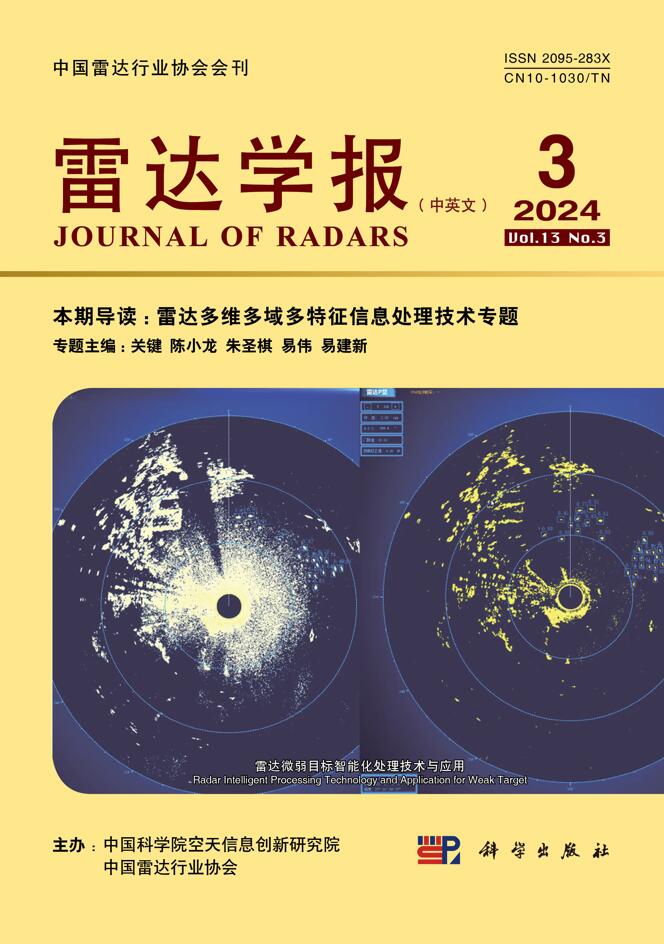





 DownLoad:
DownLoad:
